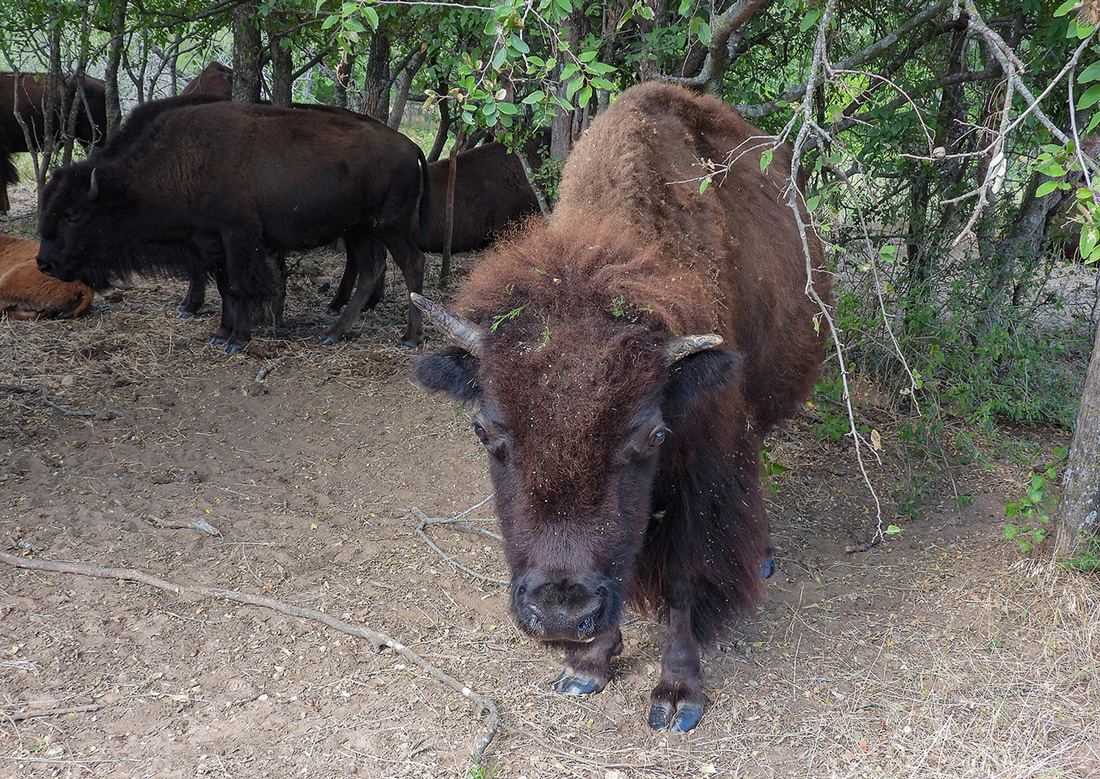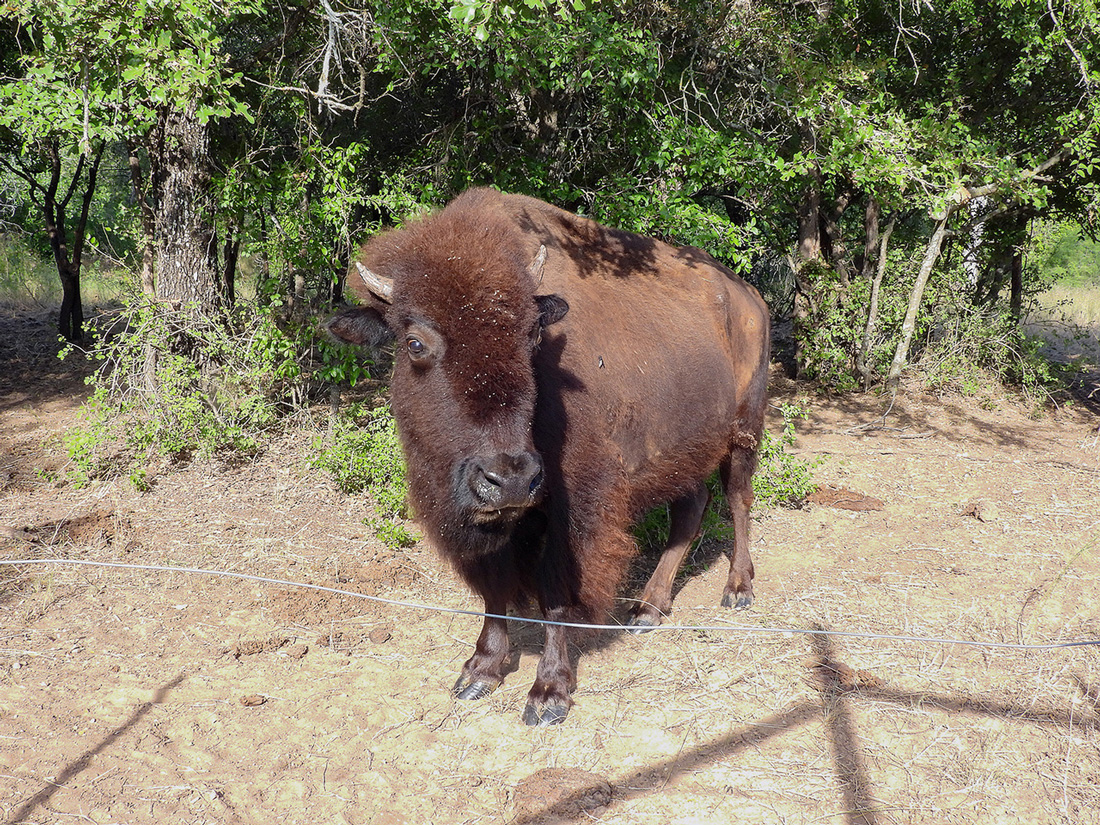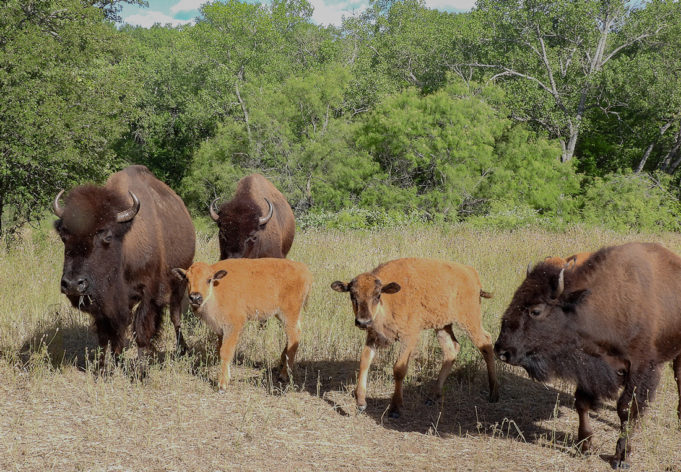Please don’t try to pet, or feed, the bison.
That was one of the messages I heard during a recent trip to the Fort Worth Nature Center and Refuge on Fossil Ridge Road.
Bison may look like tanks that could devour anything, and they seem sociable when they walk up to the fence, but the wild herd is provided with plenty to eat on the pastures where they roam, said Robert Denkhaus, the nature center’s manager.
Everything from potato chips to hot dog buns have been tossed over the fences, and human food is not healthy for the herd, he said.
When we arrived outside a fenced portion of the bison’s pasture, Denkhaus yelled out to the herd, and they quickly walked over.
“They’re asking, ‘Who are these people?’ ” I said.
But their thought processes are likely not that complex, Denkaus replied. The bison can learn routines but not necessarily information.
“The only time they really need to think is, ‘I need food,’ ‘I need water,’ ‘I need protection,’ ‘I need a mate,’ ” Denkaus said, “so not having to think about [anything else] is probably relaxing for them. Standing there in the shade with a full belly, chewing your cud, that might be just the perfect thing. Maybe in their head, they’ve got a ‘la, la, la, la’ going on,” he joked, “but that’s it.”

Photo by Teri Webster.
Working with a herd of bison, each one weighing around 1,000 pounds, is no joke. Ten bison are part of the herd (not including calves), which has been a main attraction at the refuge since 1973.
Aside from a few snorts and hoof thumps on the ground, the herd was quiet after walking up to the fence.
One of the most challenging things about working with the bison involves trying to get them to neatly file into gated runs, where they must sometimes go to be seen by the veterinarian, for example, Denkhaus said.
No one can make bisons do what they do not want to do, he added.
“They’re a thousand-pound animal, and they don’t have to listen to me,” Denkhaus said. “They’re gonna do what they want, and that’s where your knowledge of animal behavior comes into play: to be able to encourage them to do what you need them to do.”
Part of that involves making eye contact or, as it’s called, “predator eyes,” he said.
A delicate balance is involved.
“You have to know when to back off of predator behavior that’s moving them in the direction you want and not getting them that they’re attacking you,” Denkhaus said.
Bison were once plentiful over the Great Plains and many areas of North America. An estimated 50 million were killed in the 19th century by settlers looking for “food [and] sport and to deprive Native Americans of their most important natural asset,” National Geographic says.
Today there are about 500,000 bison in the country. Most of them reside on preserves or are kept on ranches to be raised for their meat. Although the Fort Worth refuge does not raise bison for meat, Denkhaus believes the animals would probably be nearly extinct if the bison meat industry did not exist.
In terms of public interaction, the refuge takes a guarded approach. Guests are asked to not reach their hands through the fence and should never try to enter an area to interact directly with the bison, Denkhaus said. These policies are designed to protect both the animals and people.
“We try to keep them as wild as possible.”

Photo by Teri Webster.
Turtles, humans, toads, birds, snails, dolphins, insects — they all have an equal inheritance to Earth’s bounty. Read more in Saving Turtle Island in Creature Comforts 2023.












